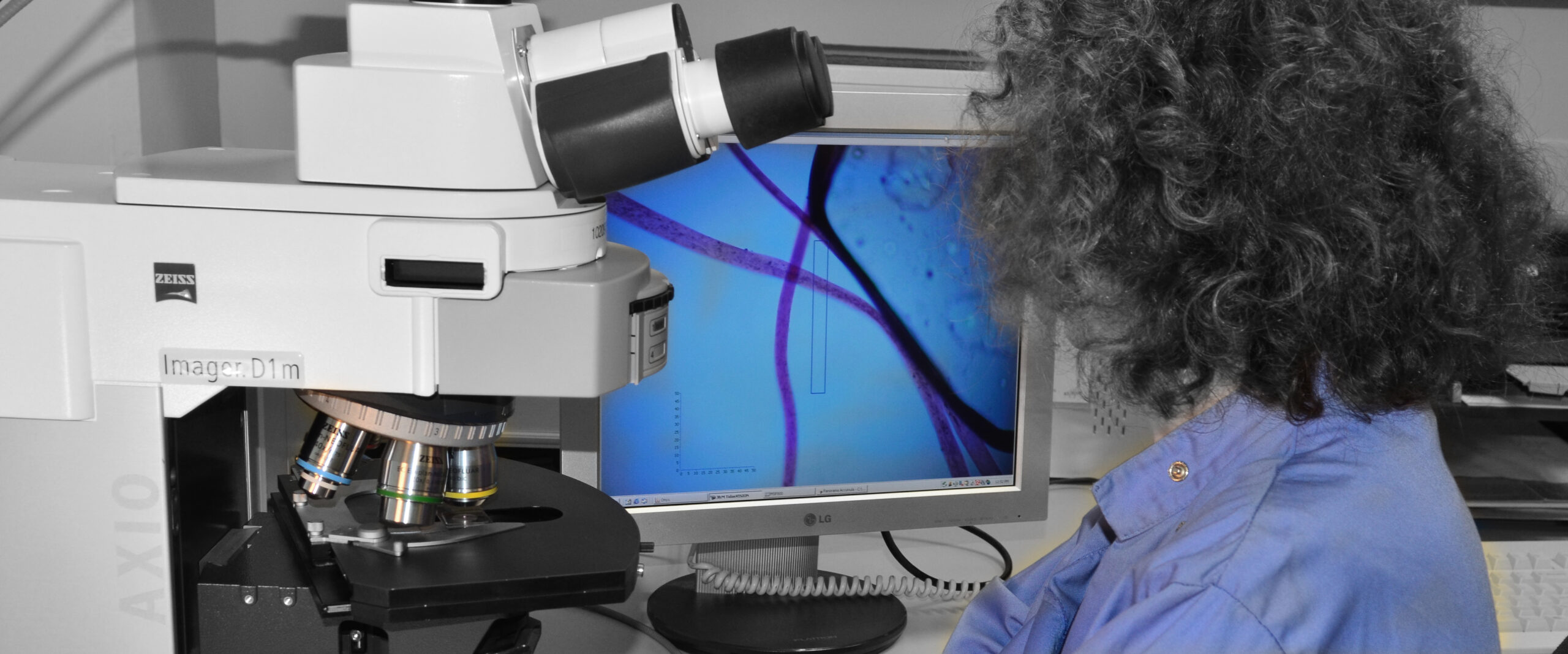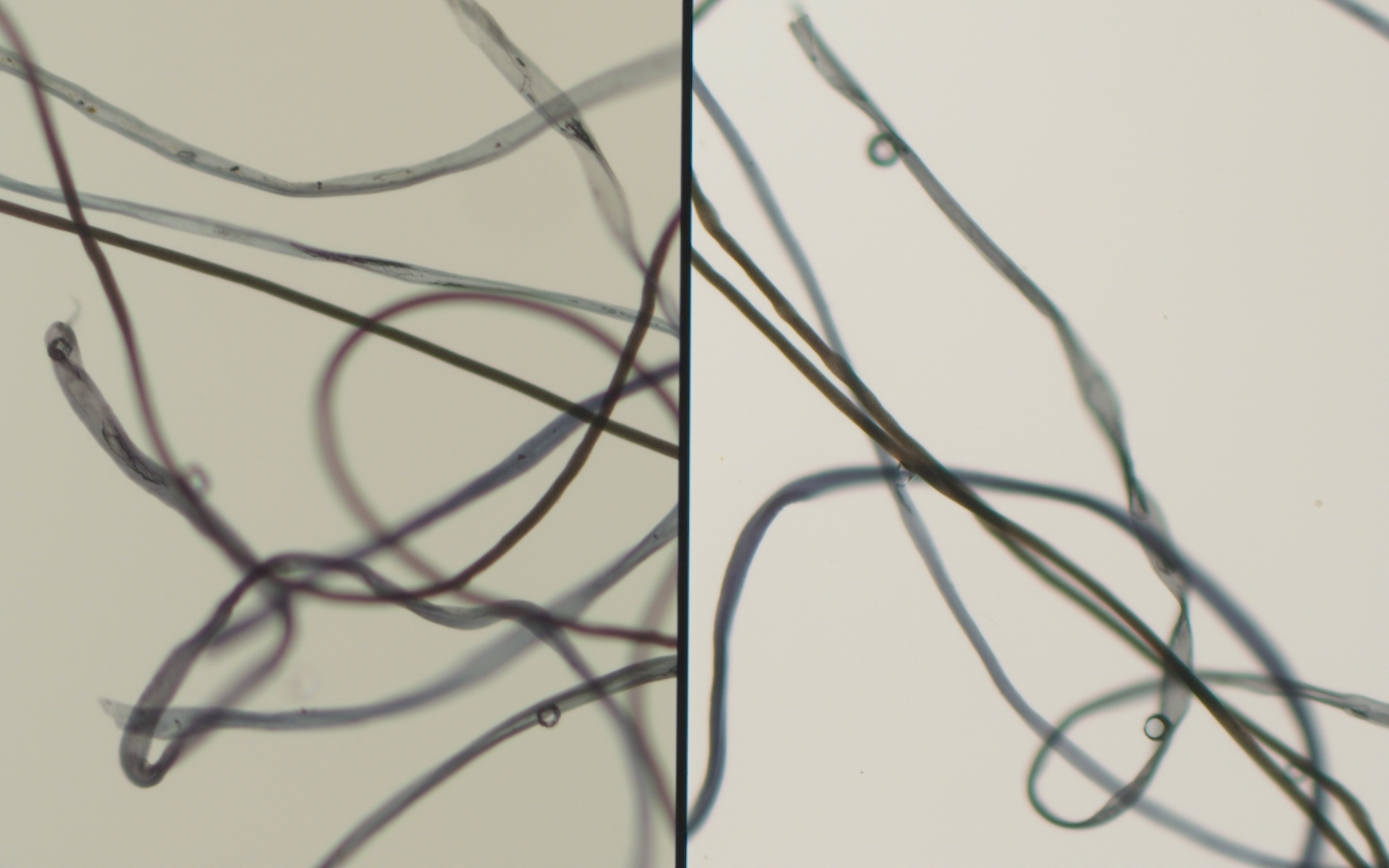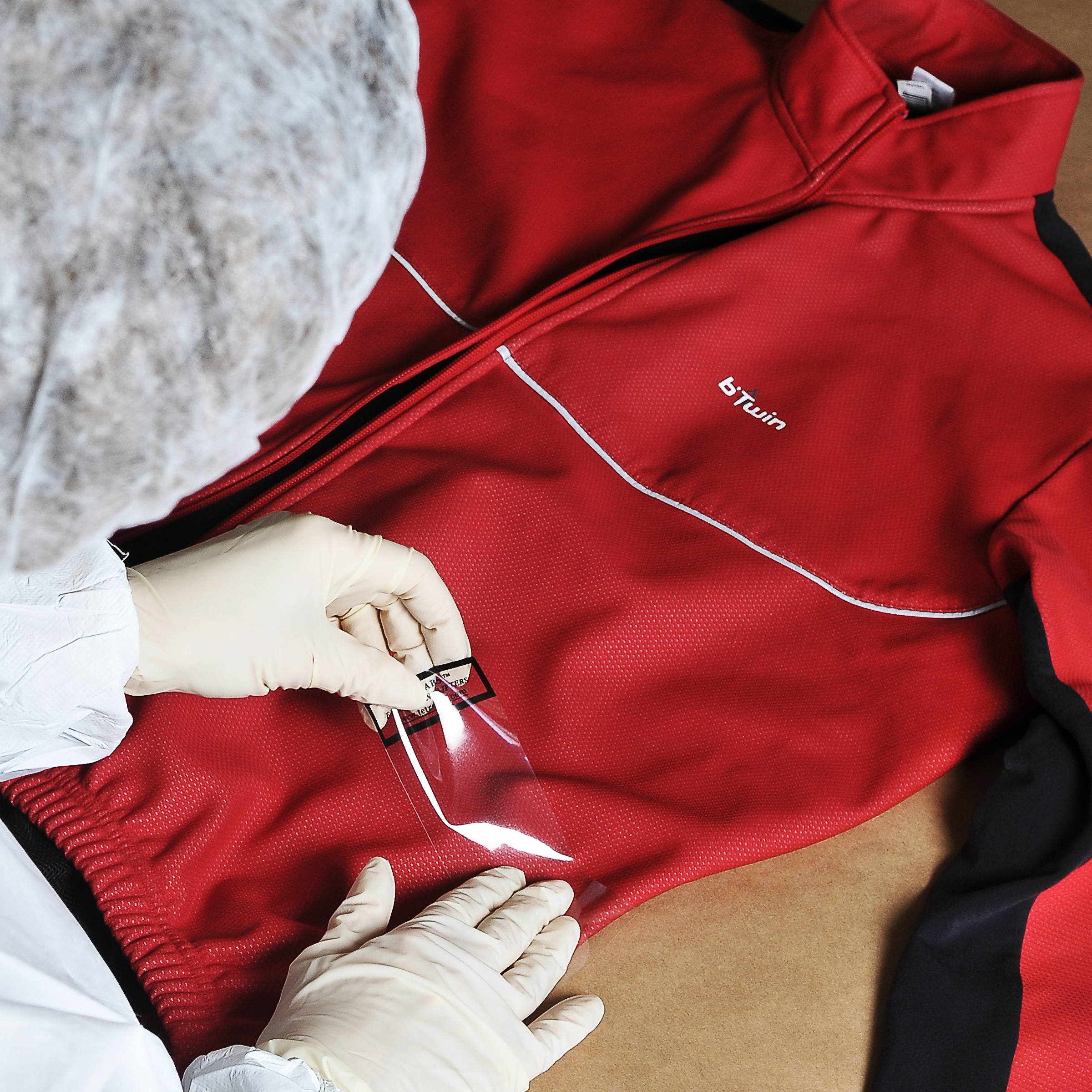Fig.1
Fibre Analysis


Fig.2

Fig.3
Fibres
In forensic terms, a fibre is any thread-like material that is flexible, elongated, and has a high length-to-diameter ratio. Fibres can be natural (originating from plants or animals) or synthetic (manufactured materials). For example, cotton from a T-shirt or wool from a jumper are natural fibres, whereas polyester or nylon threads from clothing or carpeting are synthetic. These fibres are of interest in investigations because they are a form of trace evidence – small pieces of material that can transfer and persist between people, objects, and environments during a crime. Forensic scientists classify fibres by their composition (such as wool, cotton, rayon, nylon, etc.) and sometimes by their microscopic characteristics (colour, shape, internal structure).
Fibres are easily transferred whenever there is contact between two surfaces. In the context of a crime, this often happens without anyone realizing it. For instance, in a violent struggle, a suspect’s clothing fibres might get caught on the victim’s clothing and vice versa. Even in a less violent scenario, simply sitting on a couch can leave fibres from your clothes on the upholstery and pick up some upholstery fibres on your clothes. Because of these transfer properties, fibre evidence is examined in cases such as murders, sexual assaults, kidnappings, burglaries, or hit-and-run accidents – essentially, any case where establishing that two people or objects were in the same place at the same time is important.
One useful aspect of fibre evidence is that it can sometimes indicate when a contact occurred. Fibres that are transferred to a person’s clothing tend to fall off or get lost relatively quickly during normal activities. Studies have shown that a large portion of transferred fibres can be lost in just a few hours. So, if a suspect is found to have several fibres matching a victim’s sweater on their jacket shortly after an incident, it suggests recent contact (as opposed to days later, when most would be gone). This can help investigators narrow down the timeline of a crime.
It’s important to note that fibre evidence is not as discriminatory as DNA or fingerprint evidence as many garments now are mass produced with identical fibres. Additionally, like glass and paint analysis, fibre analysis is comparison based, meaning both recovered and control fibres must be available for analysis. In the laboratory, recovered fibres and control fibres are first visually compared in normal lighting by high power comparison microscopy followed by fluorescence microscopy.
To then determine if both have the same colouring micro spectrophotometry (MSP) can be used while polarising light microscopy (PLM) and Fourier transform-infrared spectroscopy (FT-IR) spectroscopy can provide information about the type of synthetic fibre. Fibres matching the victims clothing recovered from the suspects clothing and vice versa, can provide evidence of contact between two individuals. Depending on the number of different types of fibres transferred and the rarity of these fibres, the level of association between two items can be very strong
